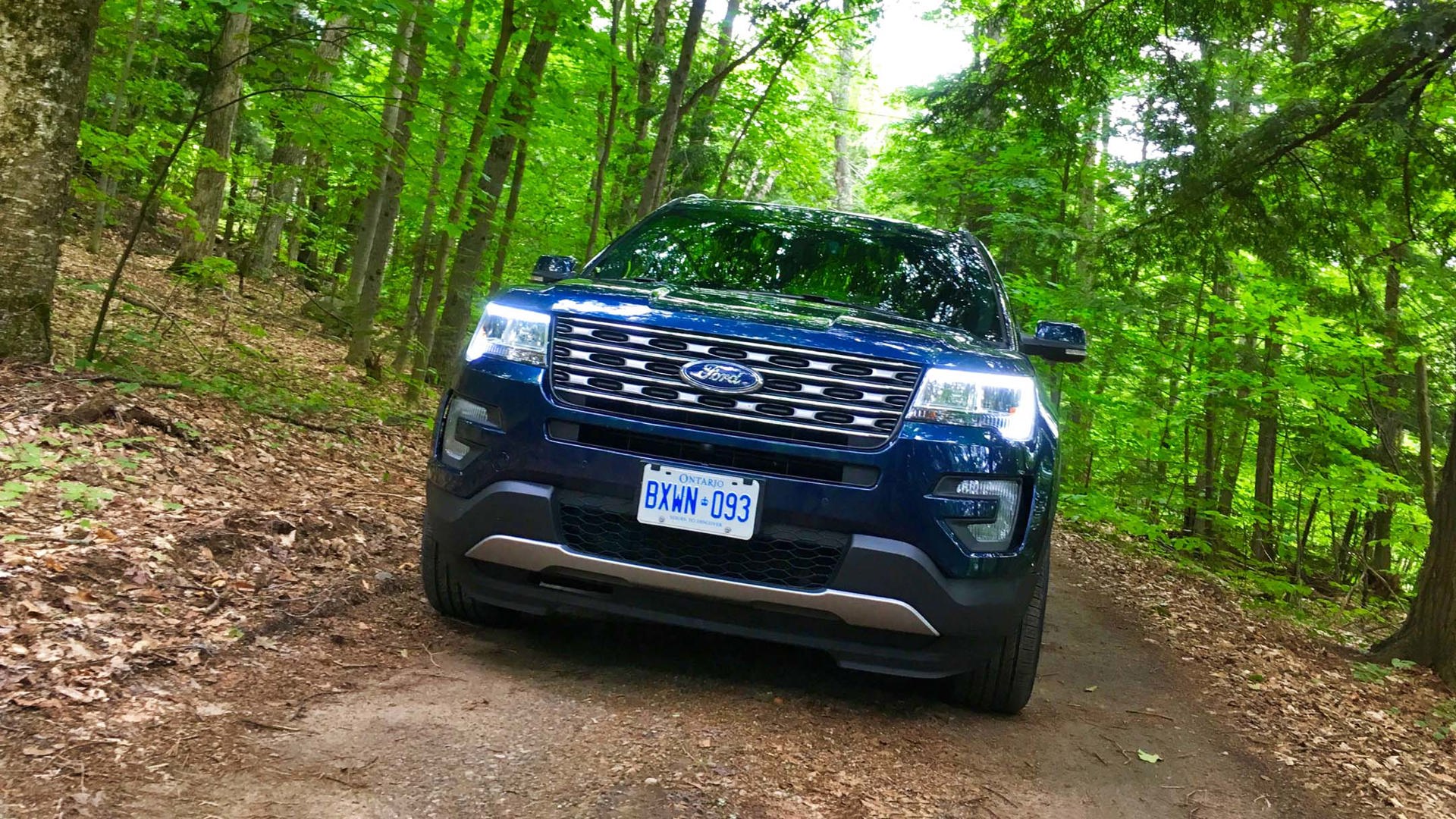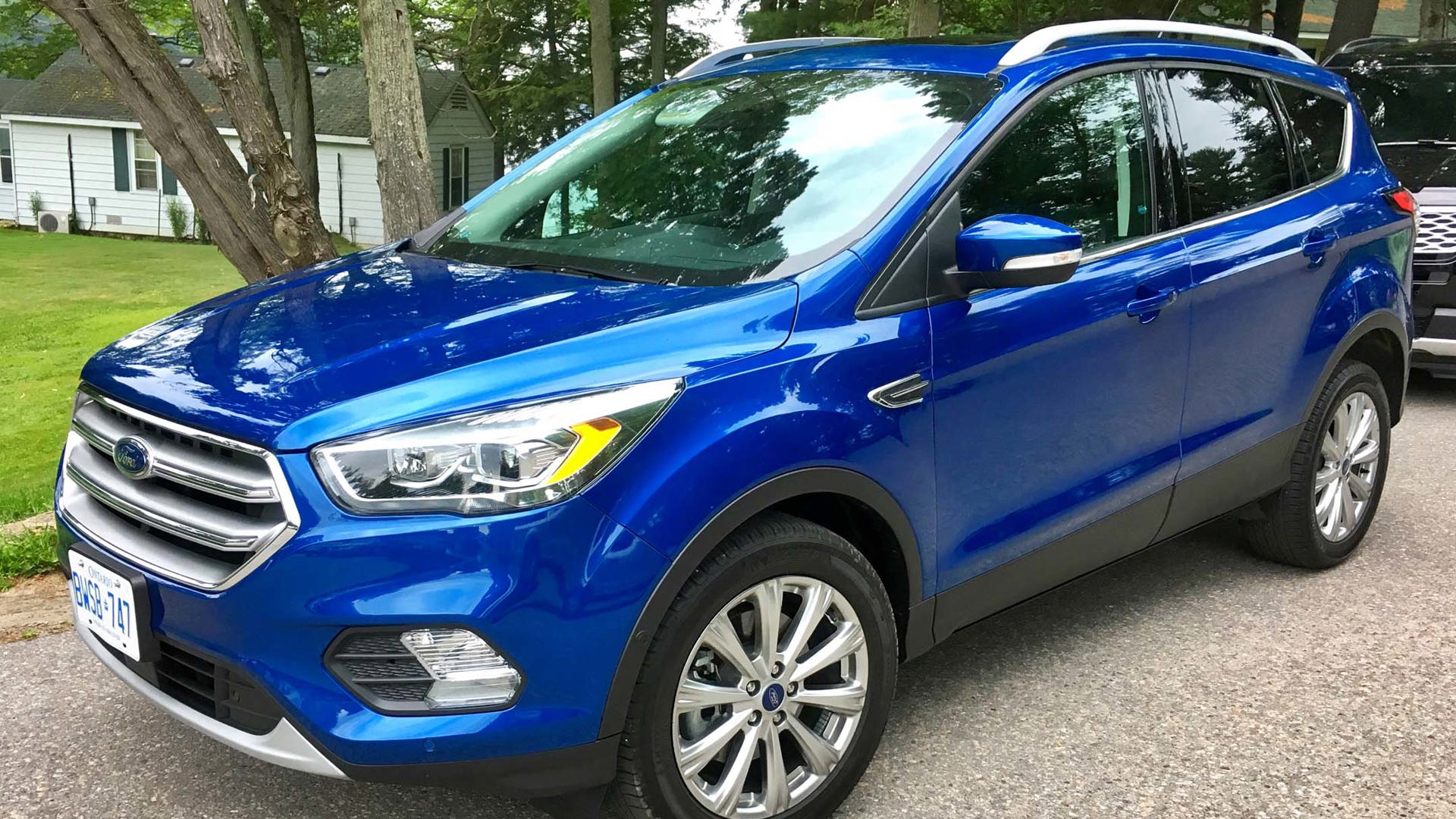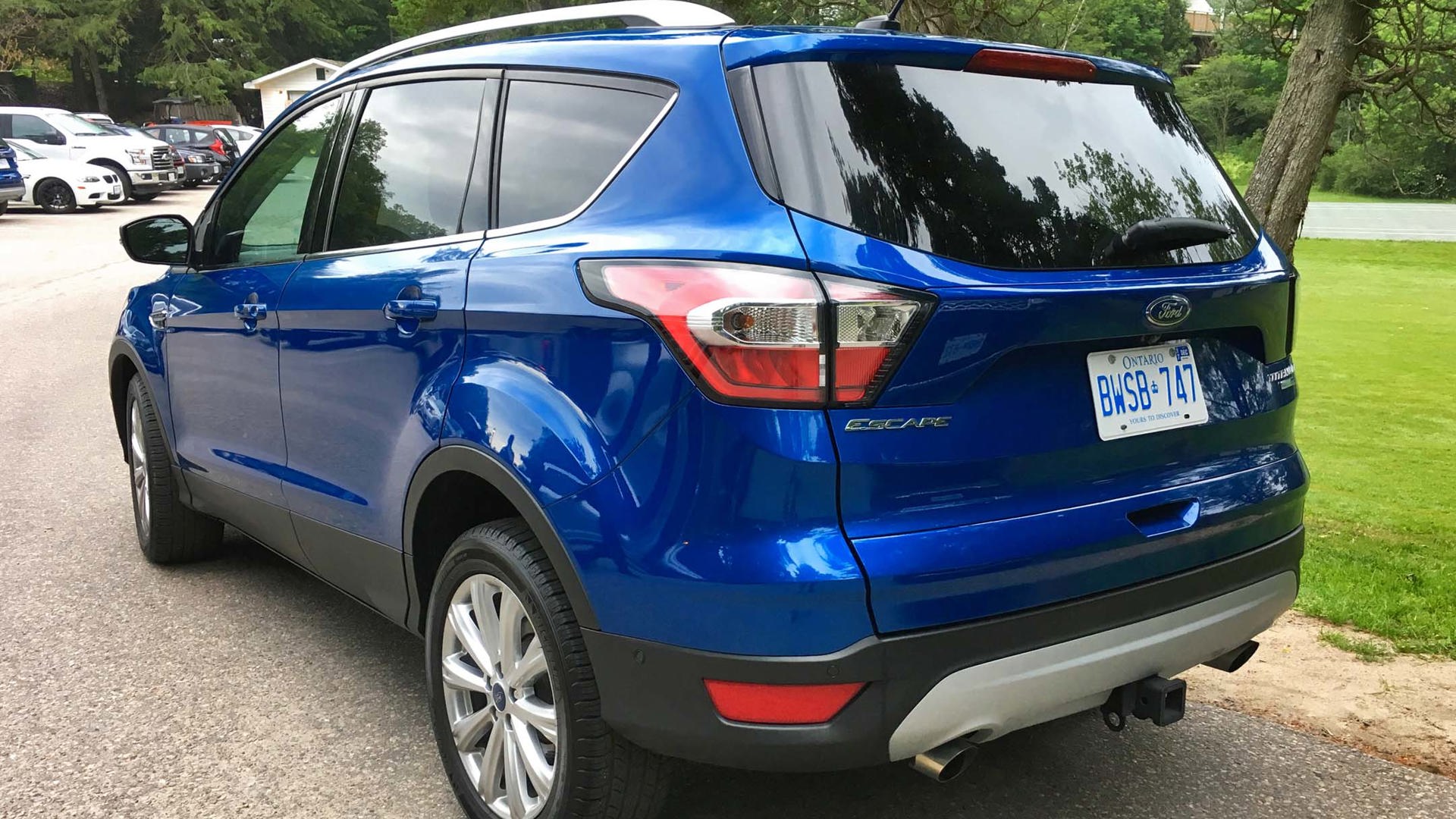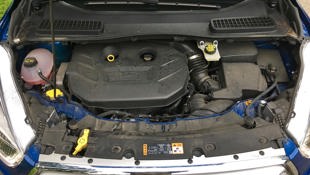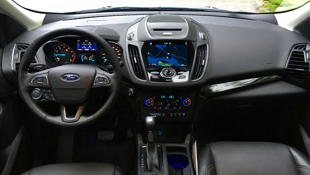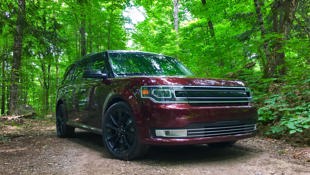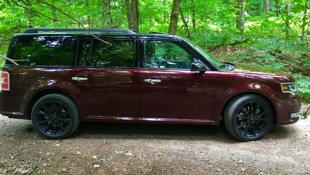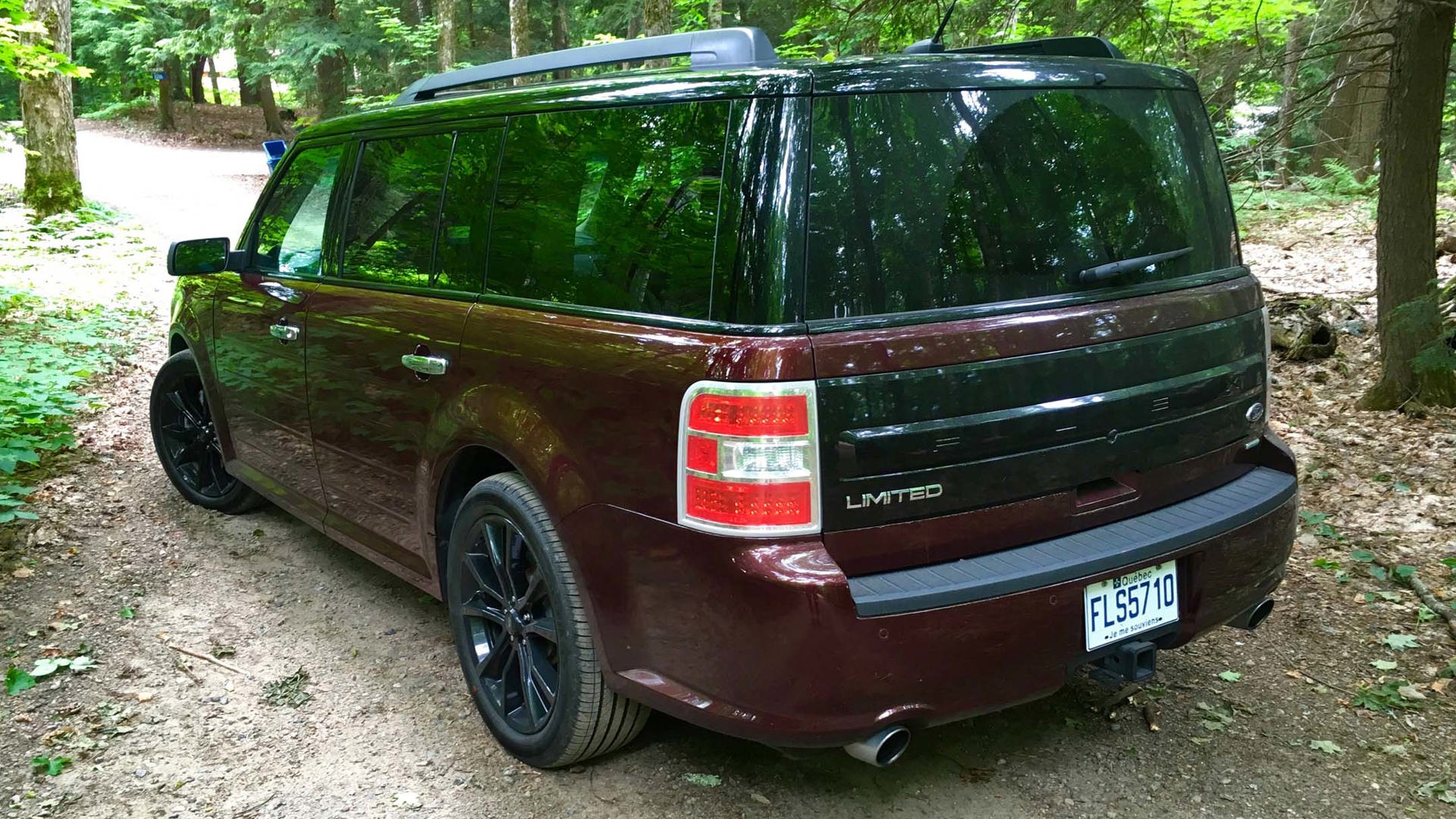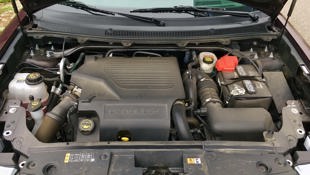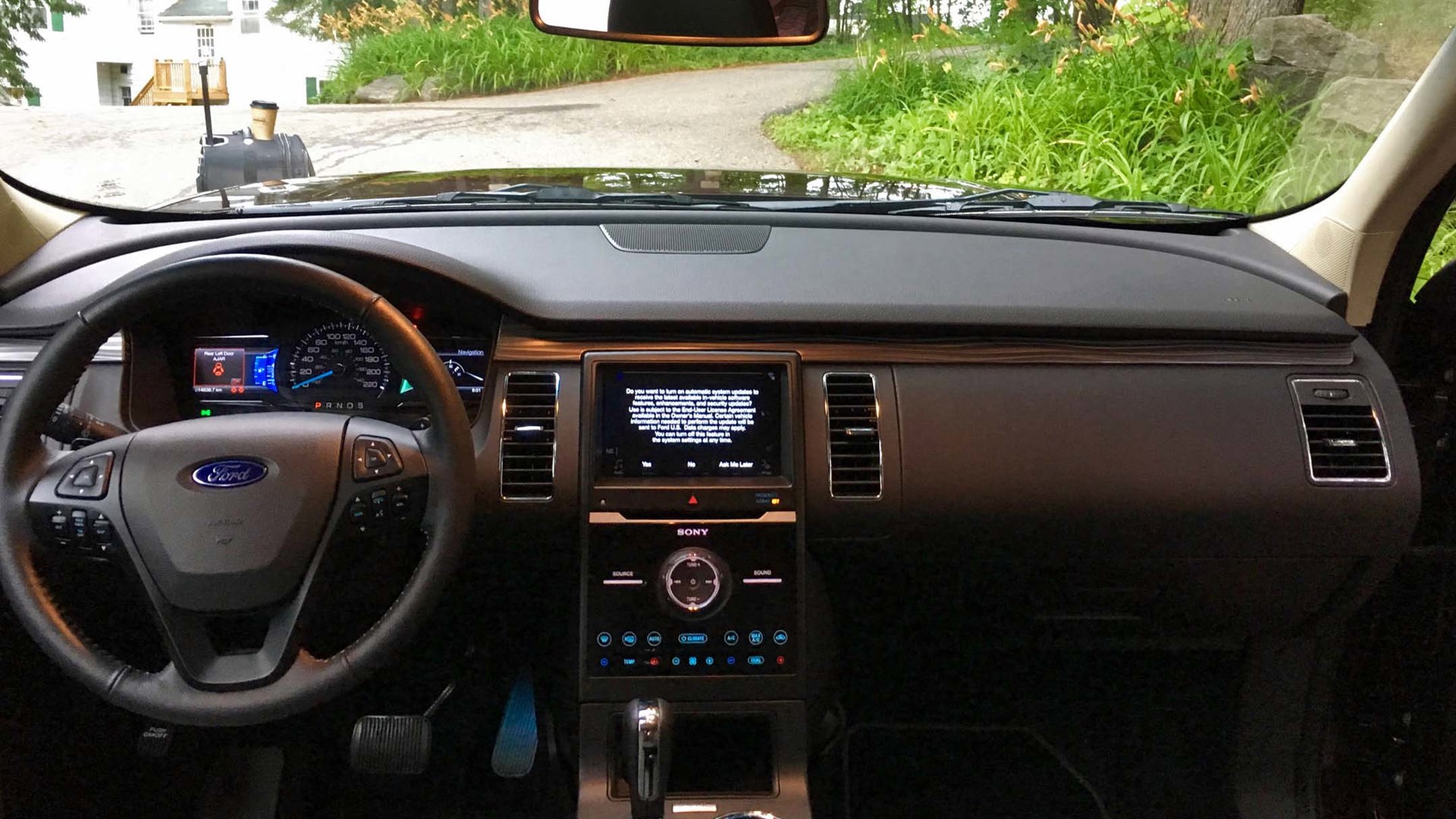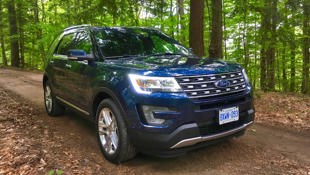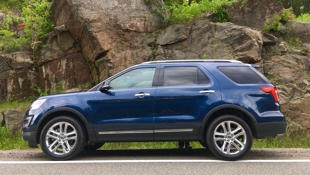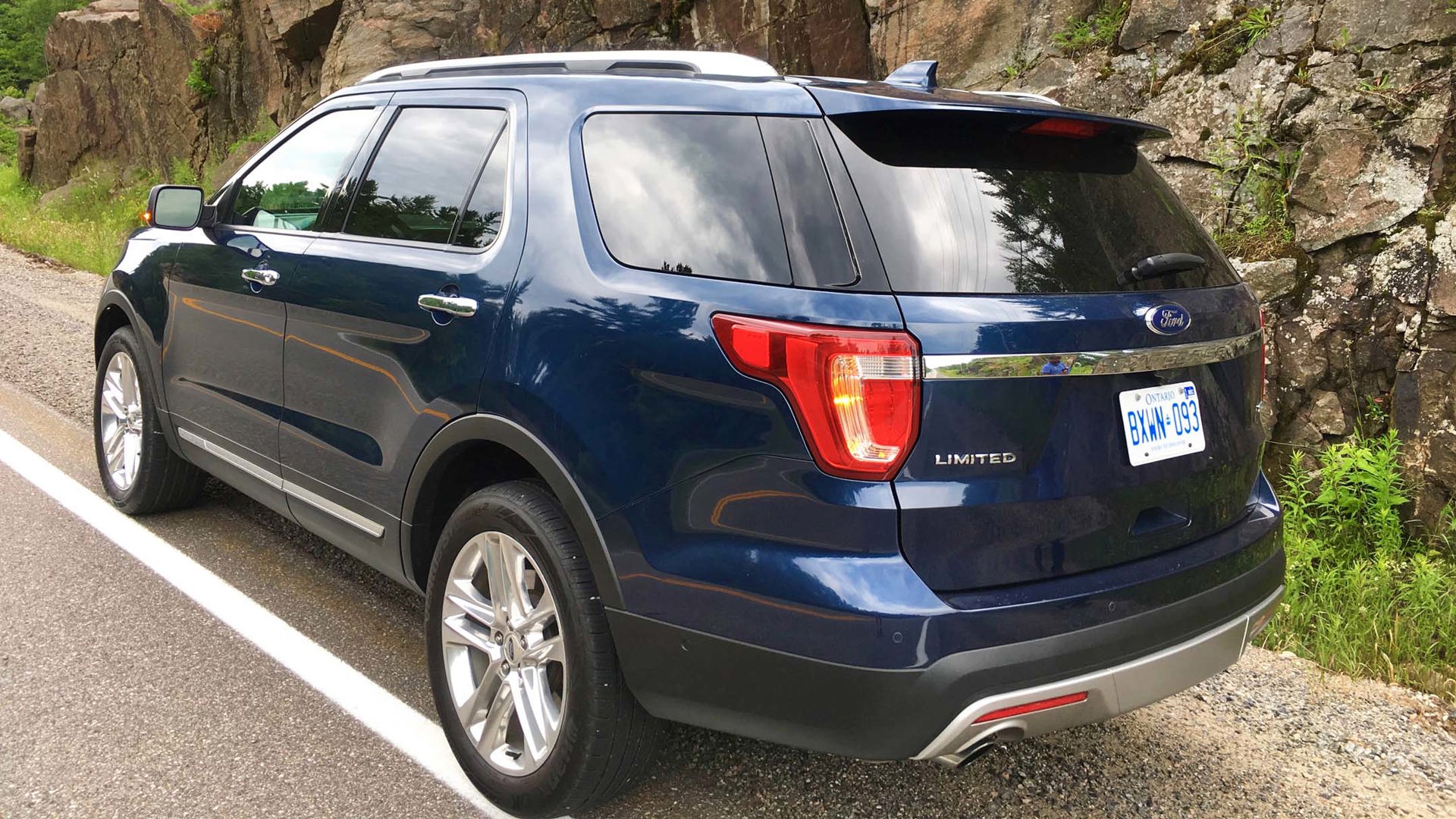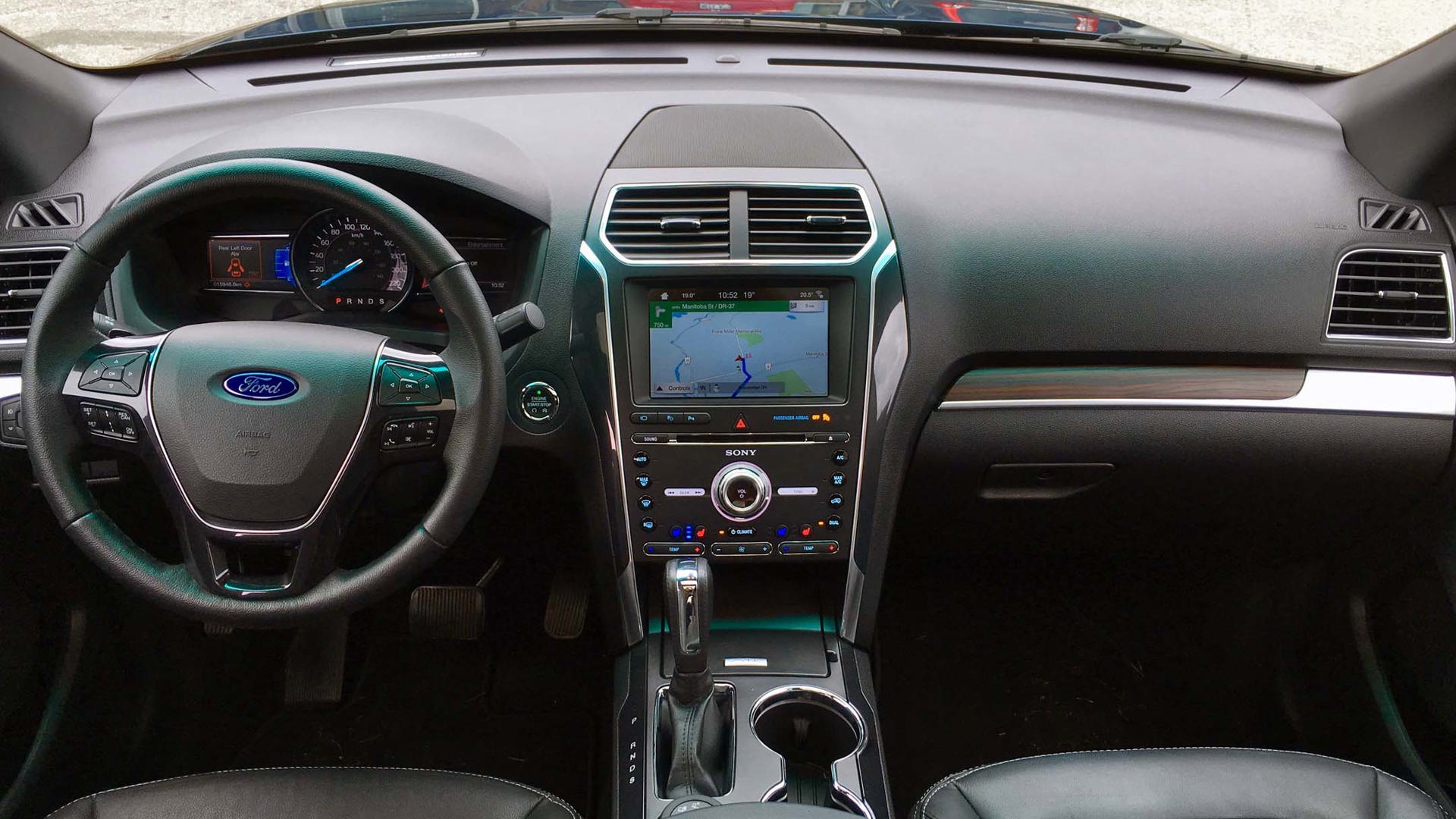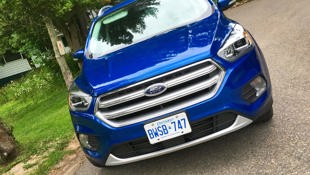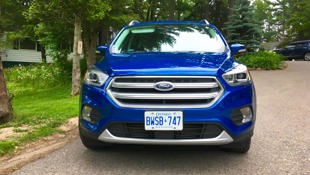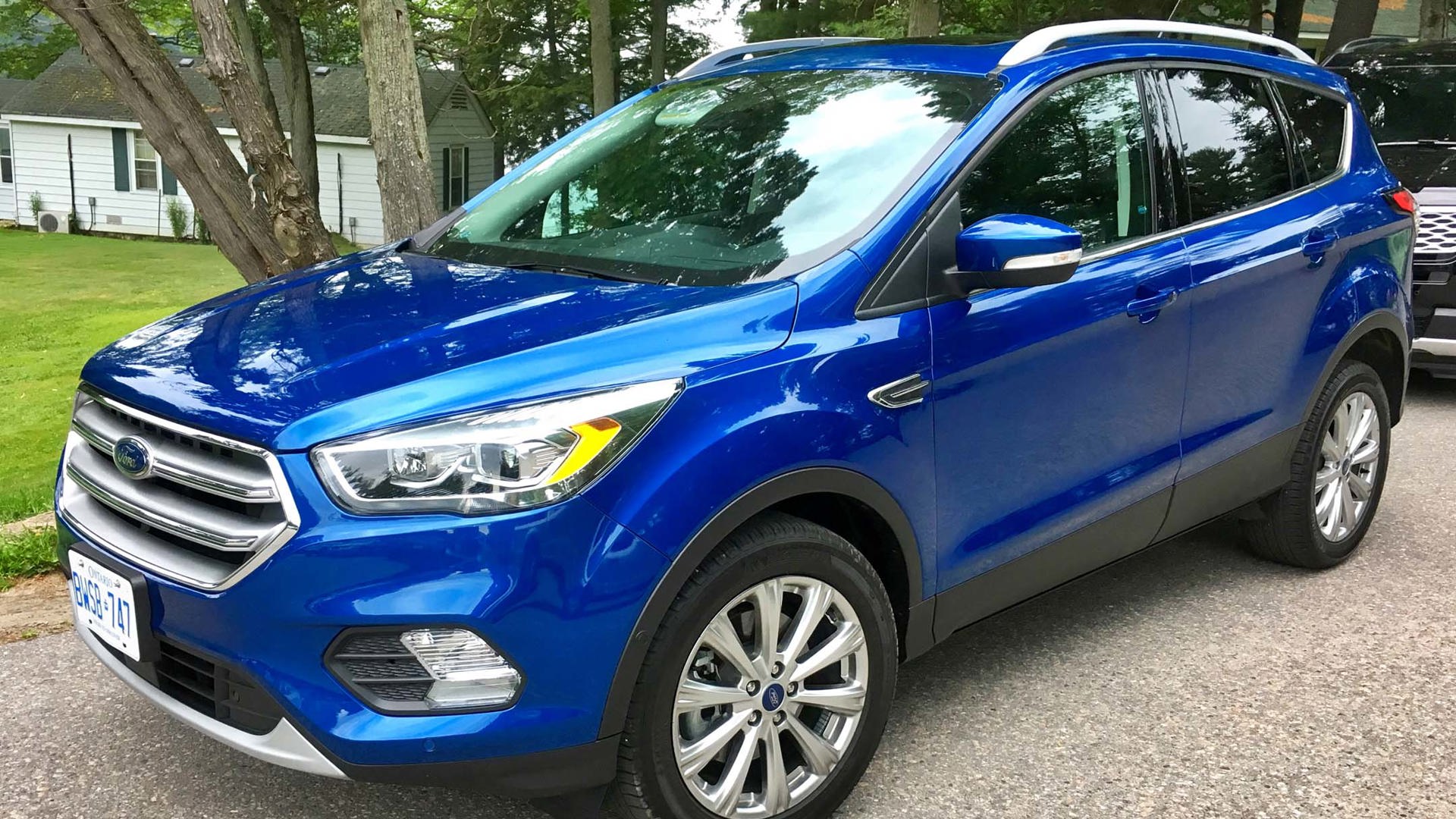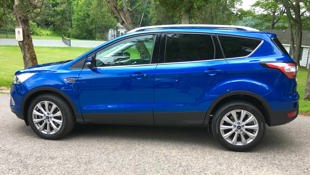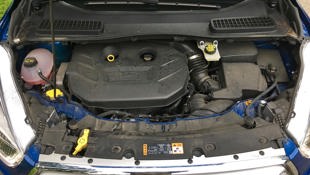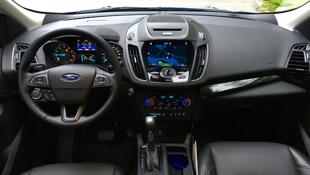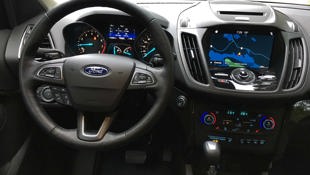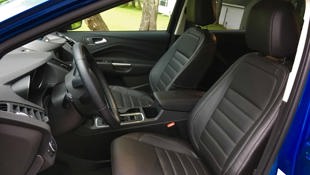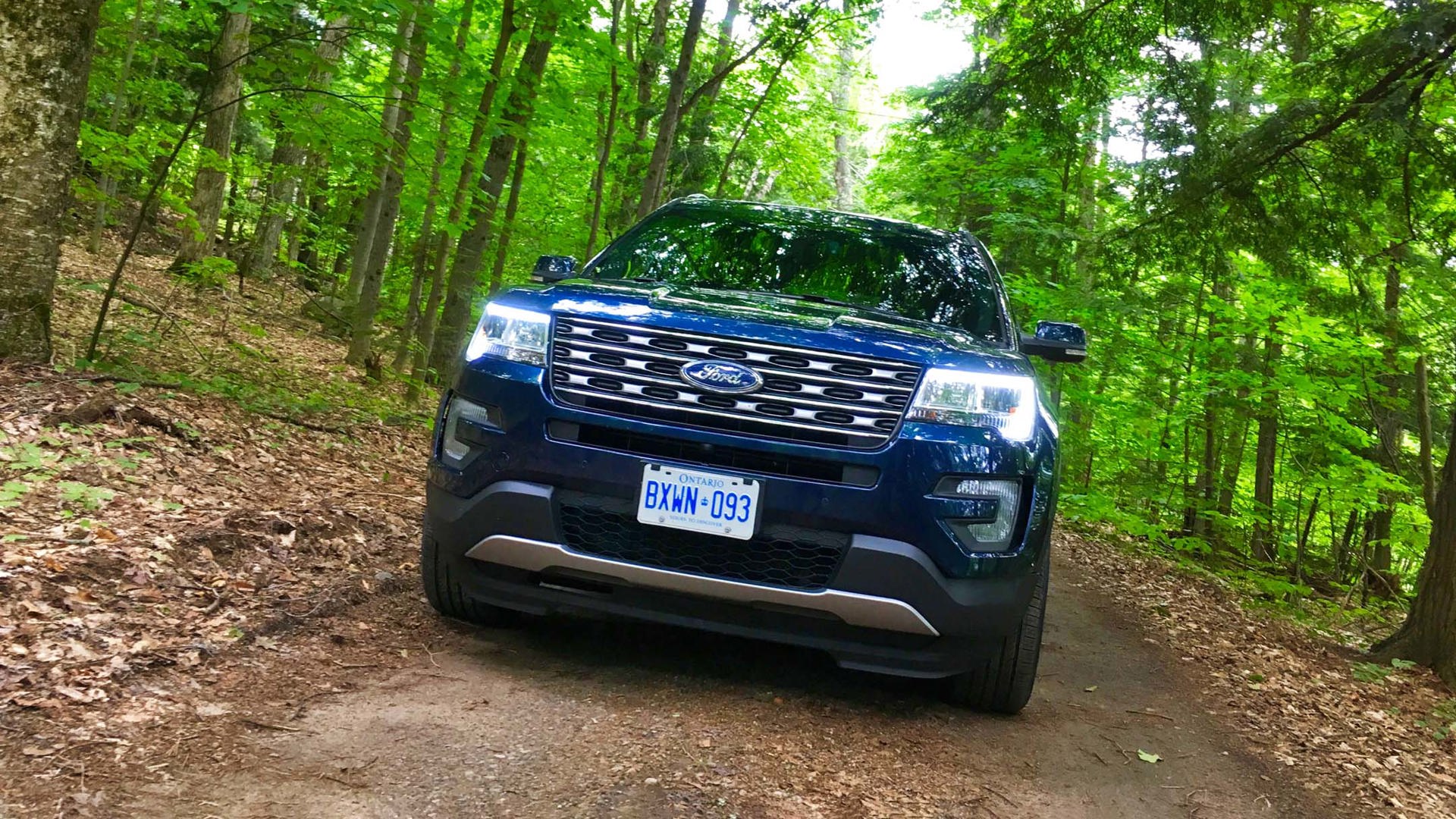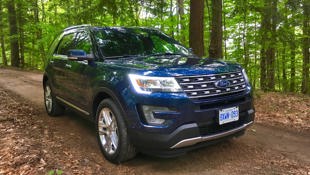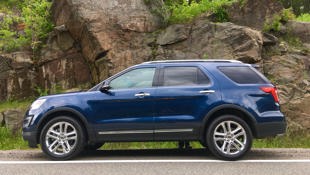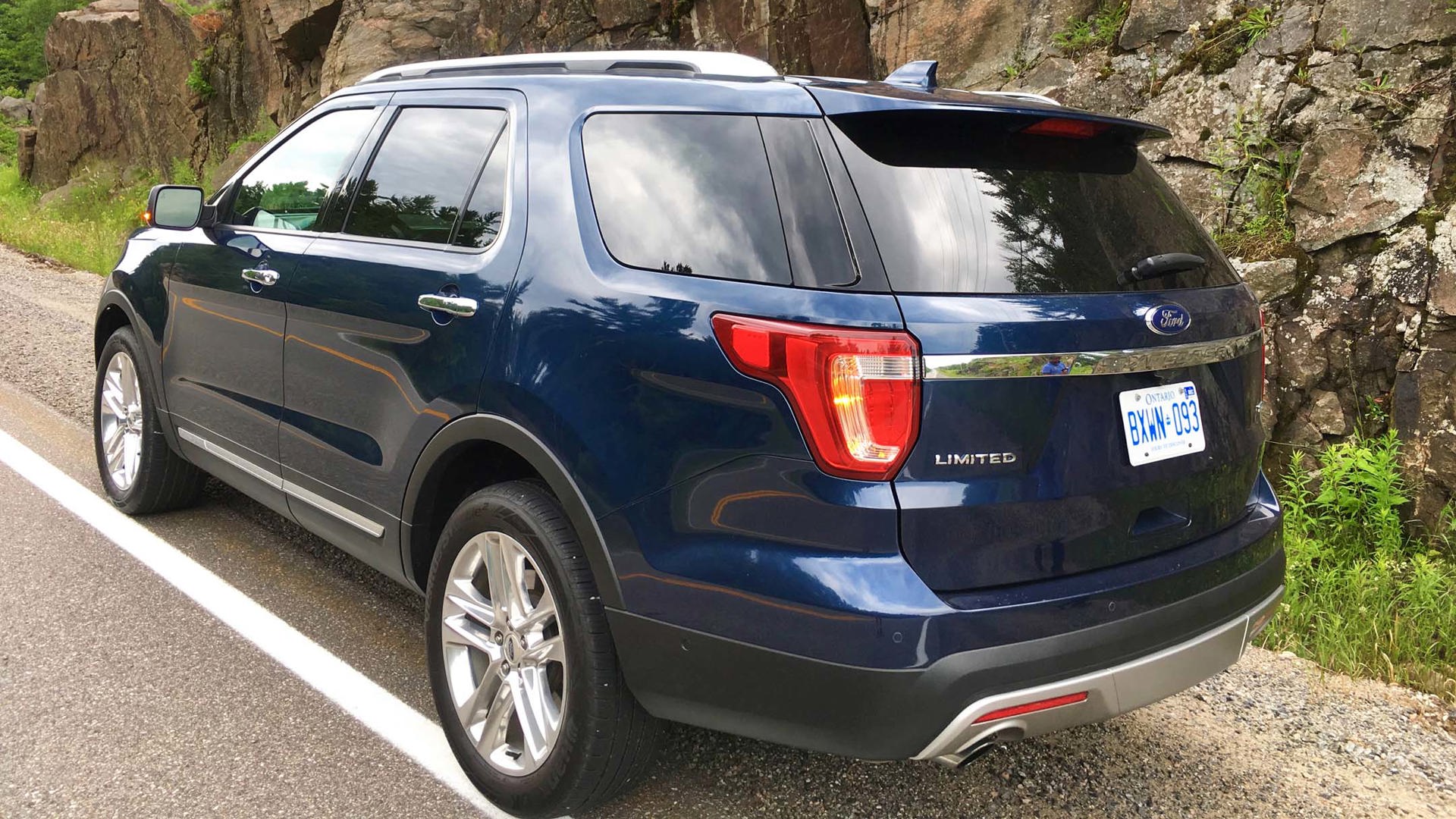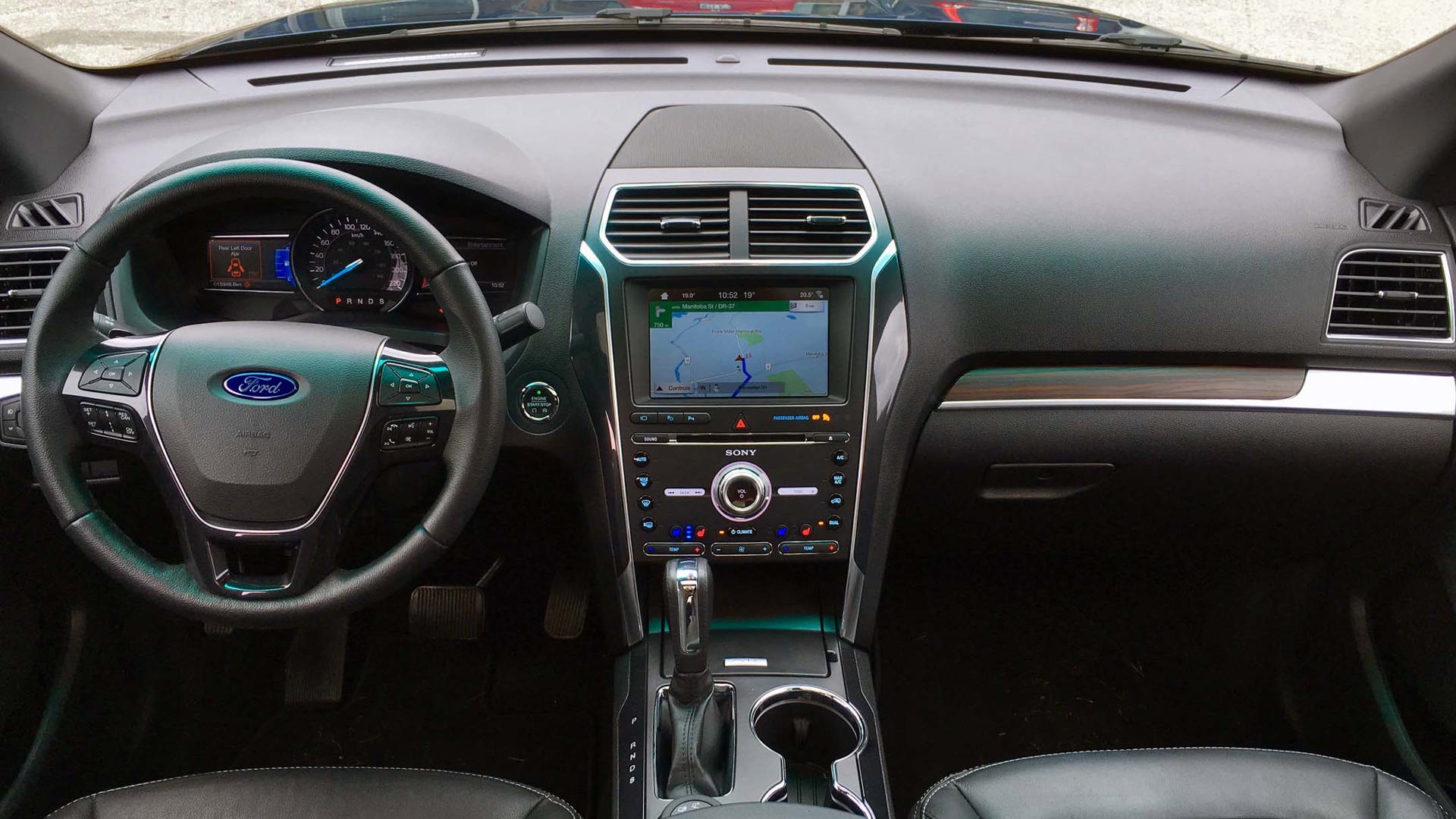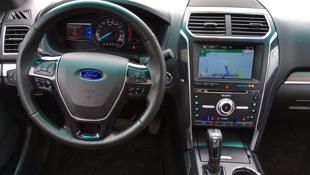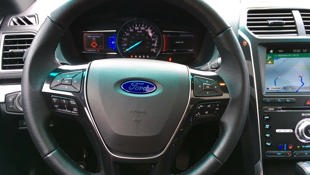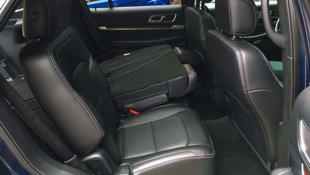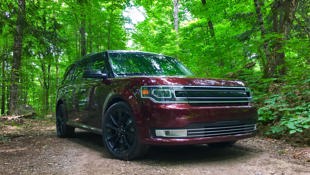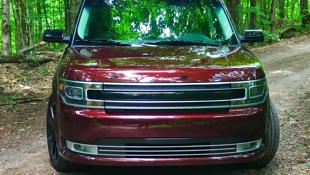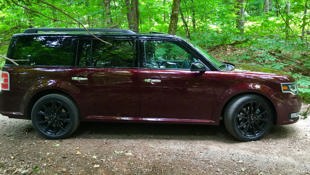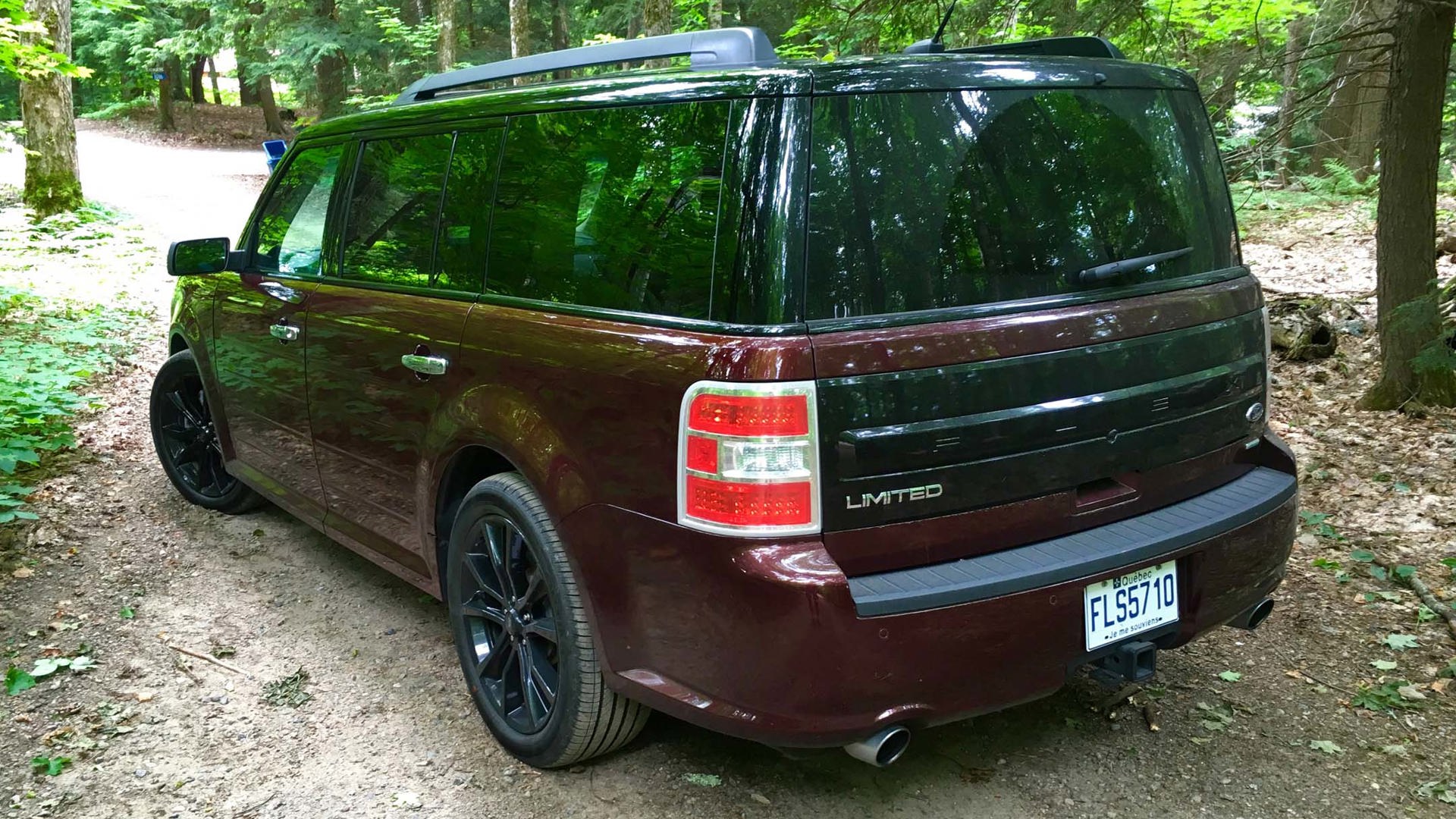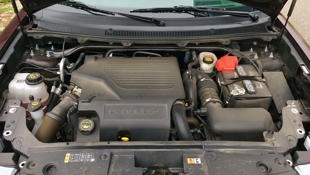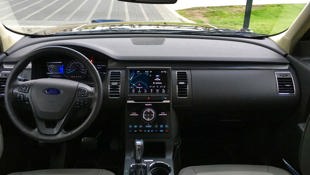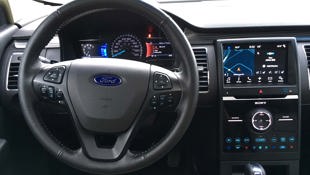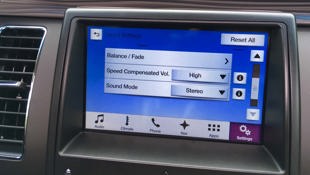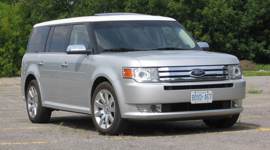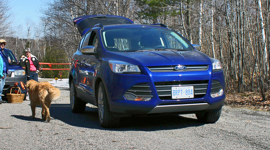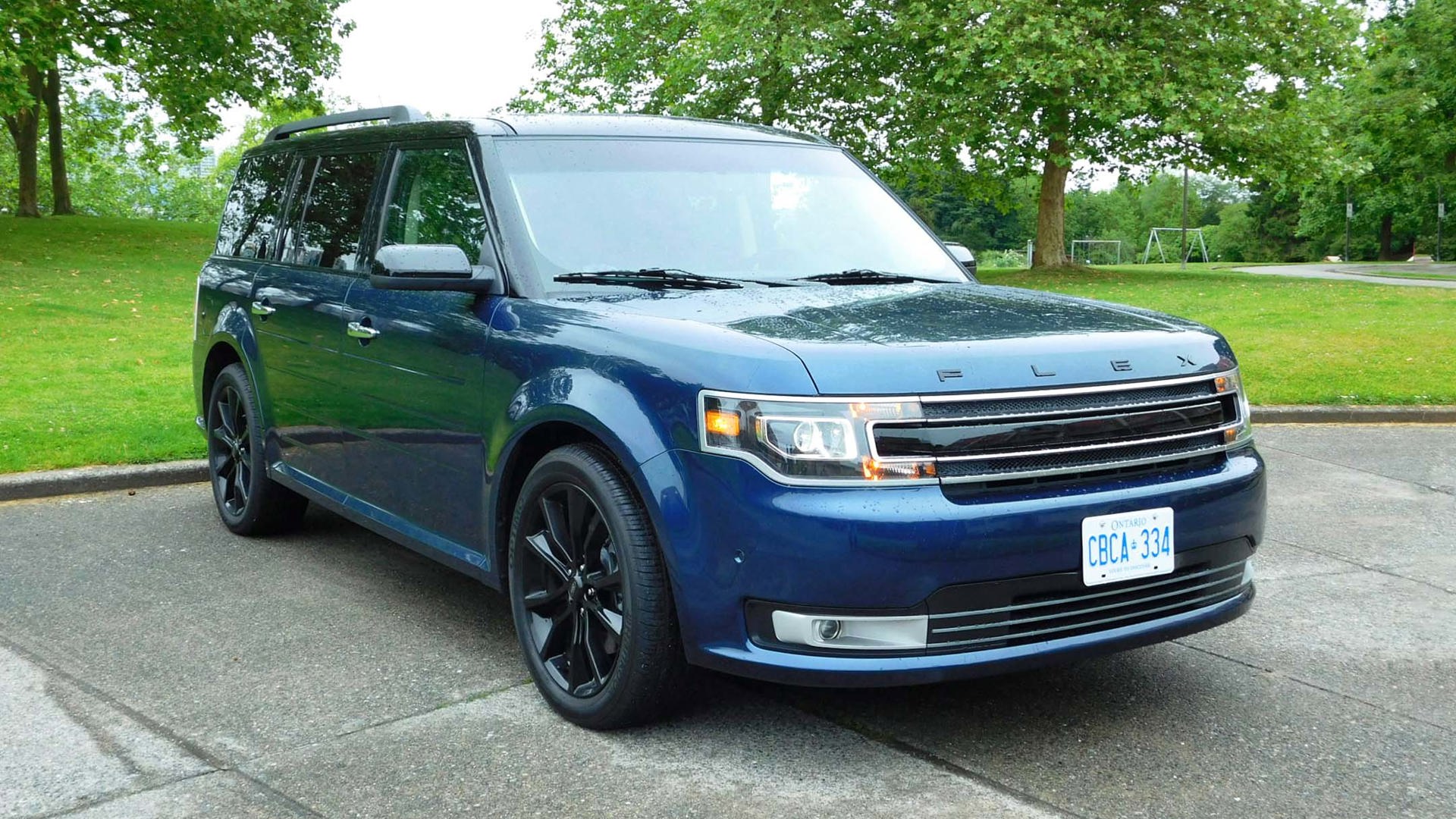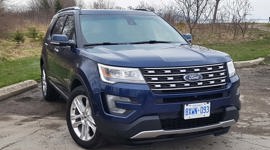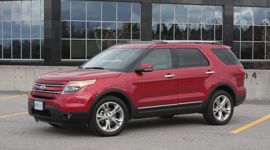Muskoka, Ontario is a corner of the world so beautiful, even the ubiquitous holidaying north Torontonians can’t ruin it. What follows are impressions of the three vehicles I got to drive in northern Ontario between treasure hunts, DEET poisonings and s’mores cookouts.
2017 Ford Escape Titanium 4WD
Years ago, I owned an earlier generation of the Escape but the model has evolved so much, you’d never know they were the same beast. For one, this tester was armed to the teeth with interventionist safety tech, so it was easy to feel confident. The 2017’s torque-vectoring, included and not an upgrade, would’ve prevented the roll my kids once experienced in my 2002 version of the Escape. Its trim, Titanium, is the highest of the bunch, starting, for some reason, at $30,006 (6?) for front-wheel drive, but still had several costly upgrades, which we’ll get to soon.
The feel of the Escape’s drive is satisfactory if not thrilling, although shifting with the steering-wheel-mounted paddles does improve it.
The Escape’s 2.0L twin-scroll turbocharged four-cylinder EcoBoost engine achieves an impressive 245 ponies and can tow up 1,588 kilos (that Class II trailer towing package is a $500 upgrade). It’s mated with a six-speed SelectShift automatic transmission and rides on 18-inch aluminum wheels.
The Escape’s government-approved fuel-efficiency numbers are 11.5 L/100 km in the city and 8.7 on the highway, but my 2.5 hour drive – nearly all highway – destroyed that, courtesy of leaden feet, ugly Highway 400 traffic, and heavy air conditioning (my aged drive partner likes his creature comforts). The auto stop-start – standard with the Titanium trim – was no aid, as we only slowed to a stop twice on the entire drive. The intelligent four-wheel drive, which senses when to send power to the rear wheels if you’re slipping, wasn’t employed either.
The feel of the Escape’s drive is satisfactory if not thrilling, although shifting with the steering-wheel-mounted paddles does improve it. The steering and braking are fine, the suspension complements them with a middling Goldilocks firmness.
Unlike the two monsters I drove next, the Escape seats five – the two up front, comfortably. A foot-activated liftgate means you can carry a phone and coffee. That is, at least until it’s time to load or unload.
The Technology Package, a $1,750 extra, is worthwhile if you have teen drivers. It includes bi-xenon headlights, auto high-beams, rain sensors, but where it earns its keep is with forward and side sensing systems, lane-keeping assist, and the accurately named “enhanced” active park-assist system, complete with parallel park, park-out assist and reverse perpendicular parking. All you need is a helmet and you’re practically invincible.
A costlier but nonetheless welcome addition is the Canadian Touring Package. For $2,000 you get the sunroof and voice-activated navigation system. The voice nav is still a bit buggy, though. It doesn’t love our Canadian twang. Be sure to test it thoroughly before signing up. Lastly, adaptive cruise control is another $1,350. If you commute regularly in big-city traffic, it’s worth a consideration. Otherwise, just wear the aforementioned helmet.
Pricing: 2017 Ford Escape Titanium 4WD
Base Price
$35,999
Options
$5,900
Destination Fee
$1,790
A/C Tax
$100
Price as Tested
$43,789
2017 Ford Explorer Limited
I was impressed overall with the Explorer, not having driven one since December – although for the price, it needs to bring a lot to the party. Fortunately it does.
For a vehicle so huge that it merits its own postal code, the Explorer handles rather well.
For instance, are you seated? Good. Remain so and you’ll be rewarded. The Ford Explorer Limited comes with “Active Motion”. That means massage. Yes, you can have your mid-back, lumbar region, and backside massaged in the front seats. See the included photo for an idea of the adjustments you can make.
Sometimes, when there’s such attention to comfort, it’s a sign that the manufacturer will ignore the driver, but not so here. For a vehicle so huge that it merits its own postal code, the Explorer handles rather well. Moreover, if you like to involve yourself in the ride, paddle shifters are standard. The sudden hills and extended turns of Muskoka with its myriad lakes provide constant challenges. And Ontario’s idiotic drivers – so in love with their phones – inflate those challenges. Riding smooth and quiet on upgraded 20-inch aluminum wheels, the Explorer proved up to the occasion.
Car nerds will appreciate how it offers a choice of three powerful engines. Ours featured the 2.3L EcoBoost direct-injection four-cylinder, a $1,000 extra, with six-speed automatic transmission. The fuel economy is rated 13.1 L/100 km in the city and 9.2 highway – but my extended highway drive rendered 12.1. Still, there’s no denying how much progress Ford and the entire industry have made, technologically speaking, over the past decade. It’s remarkable how efficient smaller engines in big SUVs can be.
Earlier I implied that this tester spoiled its riders: the options and upgrades to the already decent trim totalled over $8,000. The blandly titled Equipment Group 301A package, which included active park assist, lane-departure and lane-keep assist, blind-spot monitoring, rain-sensing wipers, auto high-beams, and rear inflatable belts, was $2,250. Active park assist is always a good choice for a city dweller who drives a car that’s nearly as big as her house, but that still seems a tad pricey. Same goes for the adaptive cruise control with collision warning, an extra $1,500.
The ride is very comfortable and quiet but total price seemed awfully big at $58,604. But if you massage my back for hours amid idyllic rocky scenery, I may just acquiesce. That is, until you put me in a Flex.
Pricing: 2017 Ford Explorer Limited 4WD
Base Price
$48,899
Options
$8,015
Destination Fee
$1,790
A/C Tax
$100
Price as Tested
$58,804
2017 Ford Flex AWD Limited
Though costly, the Flex was definitely the finest of the three drive experiences. From the beginning, this beast has been unremittingly unique and not afraid to stand out in a crowd where it’s truly hard to distinguish one SUV from another. The very first review I ever gave, I noted how it looks like a Mini Clubman upsized to accommodate Hagrid and all his little pals from Gryffindor. Looking as the Flex does, like a breadbox on 20-inch polished aluminum wheels, it leaves you pondering just how it can move so fleetly. Agile isn’t the word that comes to mind when you look at it.
The suspension is exceptionally well tuned. The engine is torquey and attentive. The lag is there, more noticeable on inclinations, but then it kicks in like a trebuchet.
Chalk up that surprise partially to the available generous twin-turbocharged 3.5L six-cylinder EcoBoost (direct-injection) engine with steering-wheel-mounted paddle shifters, and also to the engineering. A long wheelbase makes for lovely, composed handling – and there’s something about the placement of the controls that makes a spirited driver simply want to use “sport” as the default drive mode. It’s a bit like getting two cars for the price of one.
The suspension is exceptionally well tuned. The engine is torquey and attentive. The lag is there, more noticeable on inclinations, but then it kicks in like a trebuchet. The brakes blend really well with my driving style – there when you need them but not in your face. The steering is quite good – you get some feedback from the road – but I would’ve liked it to be a bit tighter in sport mode. The turning circle, while immense, is smaller than you’d expect. You certainly know exactly where you are at all times.
The big engine with its constant wanton temptations to push it hard comes at a cost (at least to this drive event’s Ford hosts). The fuel consumptions ratings, 15.7 L/100 km city and 11.2 highway are not pretty to begin with. Our four hours in the Flex didn’t come near such an attractive a number.
Speaking of numbers, this seems as good a time as any to discuss some of the creature comforts this tester provided. For the albeit heart-stopping price of $6,800, the Flex provided the 3.5L EcoBoost engine; adaptive cruise control and collision warning; the Canadian driver’s de rigueur heated steering wheel; those aforementioned 20-inch wheels; power-folding third-row seats – a spine saver; 10-way comfort-finding heated/cooled seats; a power tilt-telescopic steering column, and active park assist. The second last one lets you adjust to your steering preference up, down, back and forwards, and that last one’s a great feature if parallel parking’s not your forte and your ride, like this one, is the size of three Fortes.
There were some other pricey upgrades. The Cargo Versatility Package provided all-weather floor mats, roof rails, and Class III towing package – that was $600. Next, the multi-panel vista roof was a $1,750 hit. Costly as that might sound, the effect on the roominess inside the vehicle was immense. Burgundy velvet tinted clear-coat paint and leather seats with grey perforated inserts combined for $450 charge. Finally, the questionable voice-activated but dependable touchscreen navigation system was $800. Have a phone? It’ll do that and more for less.
Pricing: 2017 Ford Flex AWD Limited
Base Price
$45,999
Options
$11,300
Destination Fee
$1,790
A/C Tax
$100
Price as Tested
$59,189
